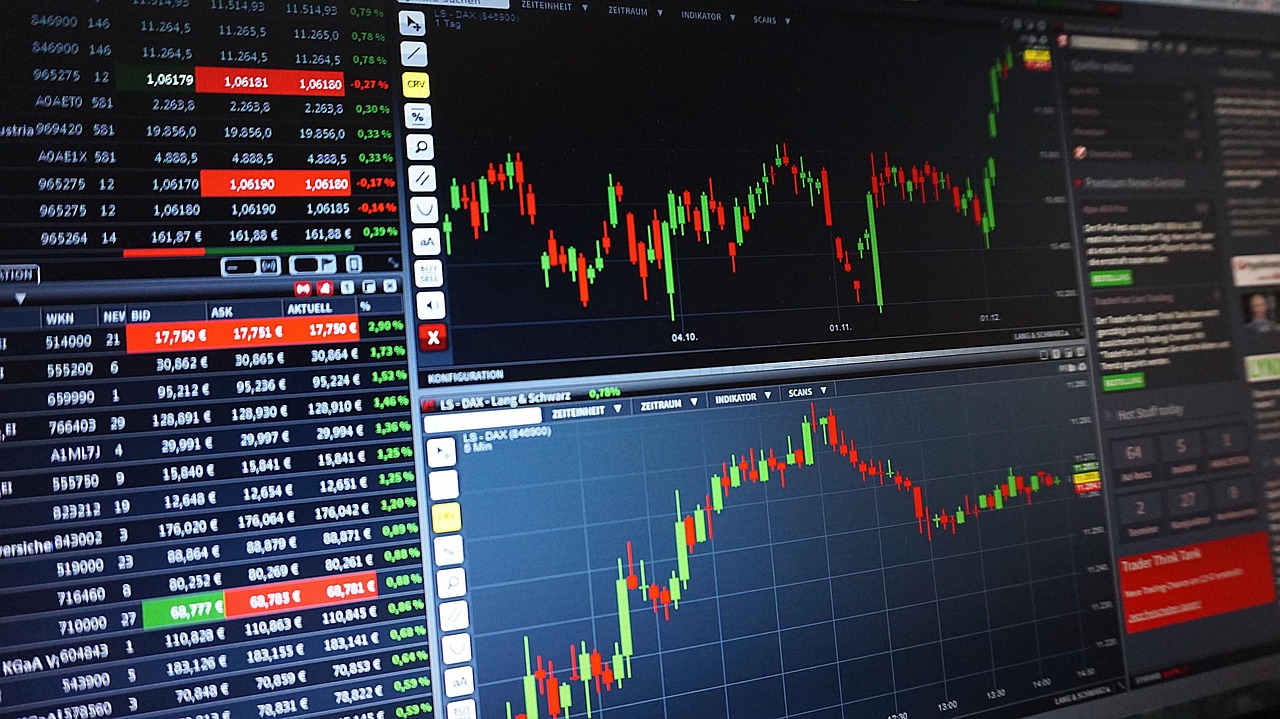Introduction
In today’s fast-paced markets, traders and investors need more than just access to buy and sell stocks. They require advanced charting tools that offer deep insights, fast execution, and real-time data to make informed decisions.
As 2025 unfolds, technology has raised the bar for what traders expect from a platform—interactive charts, real-time indicators, custom technical analysis tools, and integrations with other platforms like TradingView or MetaTrader. Whether you’re a technical trader, a swing trader, or a day trader, the right charting tools can be the difference between profit and loss.
In this blog post, we’ll dive into the top stock trading platforms in 2025 that offer advanced charting tools, evaluate their features, strengths, and who they’re best suited for.
Why Advanced Charting Tools Matter in 2025
Advanced charting is more than just candlesticks on a screen. Today’s traders rely on:
Custom indicators (like RSI, MACD, VWAP)
Drawing tools (trendlines, Fibonacci retracement, Elliott waves)
Multiple timeframes (from tick-by-tick to monthly charts)
Backtesting capabilities
Chart trading (place orders directly from charts)
Advanced charts allow traders to:
Identify trends and reversals early
Analyze support and resistance zones
Automate strategy testing
Monitor multiple assets in real-time
Let’s now explore the top platforms with best-in-class charting tools in 2025.
- TradingView (Integrated with Multiple Brokers)
Overview:
Although not a trading platform on its own, TradingView integrates with brokers like Interactive Brokers, Capital.com, and others.
Key Charting Features:
Over 100+ indicators and custom script editor (Pine Script)
Multi-chart layout (up to 8 charts per screen)
Real-time data and alerts
Extensive community sharing indicators and strategies
Pros:
Browser-based and lightning fast
Ideal for technical and algo traders
Frequent updates and innovations
Cons:
Premium tiers required for full features
Needs broker integration for live trading
Best For: Advanced technical traders and analysts who want flexibility
- Thinkorswim by Charles Schwab (Formerly TD Ameritrade)
Overview:
Thinkorswim has long been a favorite for U.S. traders and continues to impress in 2025.
Key Charting Features:
Professional-grade charting with over 400 studies
Script your own indicators with ThinkScript
Real-time economic data overlay
Heatmaps, tick charts, and Level II data
Pros:
Free for Schwab customers
Great for both equities and options
Advanced scanning tools
Cons:
Desktop software has a learning curve
Limited availability outside U.S.
Best For: Serious U.S.-based traders wanting robust analytics and chart execution
- MetaTrader 5 (via Brokers like IC Markets, FP Markets)
Overview:
Originally known for forex, MT5 is now used by stock traders worldwide thanks to its algorithmic capabilities.
Key Charting Features:
Multiple chart types including tick, bar, and line
Strategy tester for backtesting
Integrated Expert Advisors (EAs) for automated trading
Dozens of technical indicators and drawing tools
Pros:
Lightweight desktop and mobile apps
Advanced algorithmic and auto-trading support
Fast execution and broker-neutral
Cons:
Interface is less intuitive for stock traders
Broker setup required
Best For: Algorithmic traders, developers, and quantitative analysts
- eToro
Overview:
eToro is widely known for social trading but has invested heavily in charting upgrades.
Key Charting Features:
Powered by ProCharts, an advanced charting engine
Multiple charts on one screen
Over 60 indicators and chart types
Copy-trading interface for strategy tracking
Pros:
Easy for beginners to transition into technical trading
Integrated social feed shows what top traders are analyzing
Available globally
Cons:
Still not as in-depth as TradingView or Thinkorswim
Limited custom indicators
Best For: Beginners and social traders who want to explore charts without complexity
- Interactive Brokers (IBKR Trader Workstation)
Overview:
IBKR is a global powerhouse in trading. Its TWS platform has been consistently upgraded and remains one of the most comprehensive tools for professionals.
Key Charting Features:
Over 120+ indicators and studies
Real-time streaming data and news
Supports chart trading
Deep integrations with Excel and APIs
Pros:
Fast and accurate execution
Direct access to 135+ markets
Advanced risk tools
Cons:
Learning curve is steep
Interface is cluttered without customization
Best For: Institutional traders and professionals managing portfolios
- Webull
Overview:
Webull is a rising star among retail investors in the U.S., offering a slick and fast platform.
Key Charting Features:
50+ technical indicators
Advanced chart layout and full-screen mode
Real-time quotes and Level II data (with subscription)
Multiple chart templates
Pros:
No commission stock trades
Great mobile app charting
Clean UI and active updates
Cons:
Limited to U.S. stocks
Custom indicators not available yet
Best For: U.S.-based retail traders who want great charts on mobile and desktop
- Trading 212
Overview:
Popular in Europe, Trading 212 provides easy access to stocks and ETFs with modern tools.
Key Charting Features:
Clean interface with multiple chart types
Customizable indicators
Great real-time price updates
Pros:
Free stock trading
Easy to use
Integrated educational content
Cons:
Lacks high-level customization
Limited to Europe for now
Best For: European investors who want simplicity with decent charting
- NinjaTrader
Overview:
NinjaTrader is geared toward active traders in futures, stocks, and forex.
Key Charting Features:
Advanced technical analysis tools
Tick charts, order flow, volume profile
Strategy builder and simulator
Plug-ins for third-party indicators
Pros:
Highly customizable
Great for strategy testing
Supports algo trading
Cons:
Requires subscription or funding
May overwhelm beginners
Best For: Day traders and professional analysts
Comparison Table: Charting Features at a Glance
Platform Indicators Custom Scripts Chart Trading Backtesting Best For
TradingView 100+ Yes (Pine Script) Yes Yes Technical traders
Thinkorswim 400+ Yes (ThinkScript) Yes Yes U.S. traders & options pros
MetaTrader 5 80+ Yes (MQL5) Yes Yes Algorithmic traders
eToro 60+ No No No Social/informal traders
IBKR TWS 120+ Yes (via APIs) Yes Yes Global pro traders
Webull 50+ No Yes Limited U.S. retail traders
Trading 212 30+ No No No Beginner European investors
NinjaTrader 150+ Yes (NinjaScript) Yes Yes Futures and day traders
How to Choose the Right Platform for Charting in 2025
Here’s a step-by-step checklist:
Determine your trading style – Scalper? Swing trader? Long-term investor?
Do you need automation or scripting? – Choose Thinkorswim, MT5, or NinjaTrader.
Are you trading globally? – Go with Interactive Brokers or MetaTrader.
Want simplicity? – Try eToro, Webull, or Trading 212.
Need integration with other tools? – Look at TradingView or IBKR.
Tips to Maximize Charting Efficiency
Use templates to save indicator sets and layouts
Set up multiple screens or chart tabs for different timeframes
Backtest your strategy before live trading
Join charting communities to learn and copy proven setups
Avoid clutter – too many indicators can confuse instead of clarify
Final Thoughts
In 2025, stock trading platforms are offering more sophisticated charting tools than ever before. Whether you’re a beginner or a pro, the right platform can empower your decision-making, refine your strategy, and boost your profitability.
Our Top Picks:
Best Overall for Advanced Charting: TradingView
Best Free Platform with Pro Features: Thinkorswim
Best for Automated Strategies: MetaTrader 5
Best for Global Stock Trading: IBKR
Best for Beginners with Good Charts: Webull or eToro
Evaluate your needs, test the platforms (most offer demo accounts), and build your strategy with confidence.



